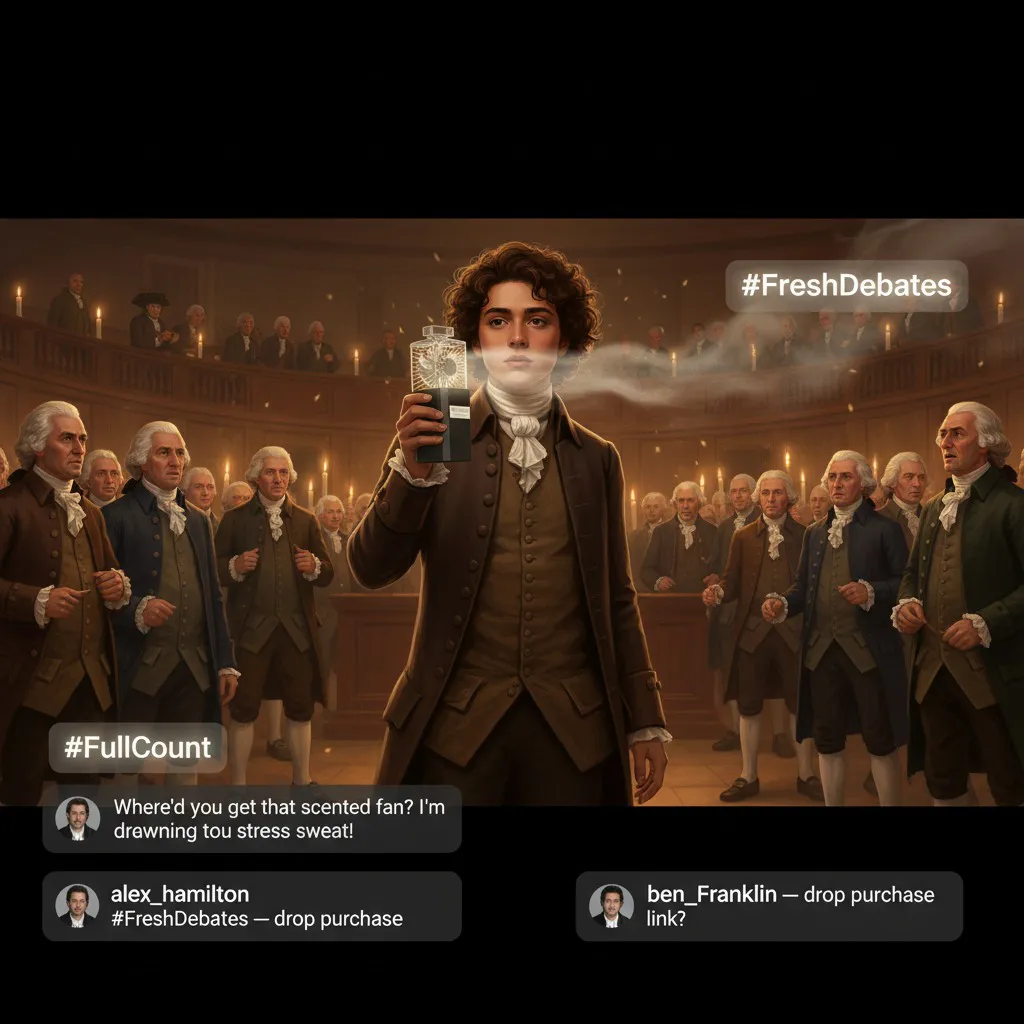In early U.S. history, the thirteen original states acted like separate mini‑countries under the weak Articles of Confederation — no national army, no unified tax system, and an empty treasury. Interstate trade was crippled by tariffs and disputes, while Revolutionary War debts weighed heavily on the nation.
These flaws led to the Constitutional Convention of 1787 in Philadelphia, where the Founding Fathers drafted the U.S. Constitution — creating a stronger federal government to unify the states, stabilize the economy
In the early United States, the thirteen original states acted like separate mini‑countries, each making its own laws. The central government under the Articles of Confederation was weak — no permanent national army, no unified tax system, and an empty treasury.
Interstate trade suffered from tariffs and disputes, while Revolutionary War debts weighed heavily on the young republic. These flaws led to the Constitutional Convention of 1787, where the U.S. Constitution was drafted to unify the states, strengthen federal power, and stabilize the economy.
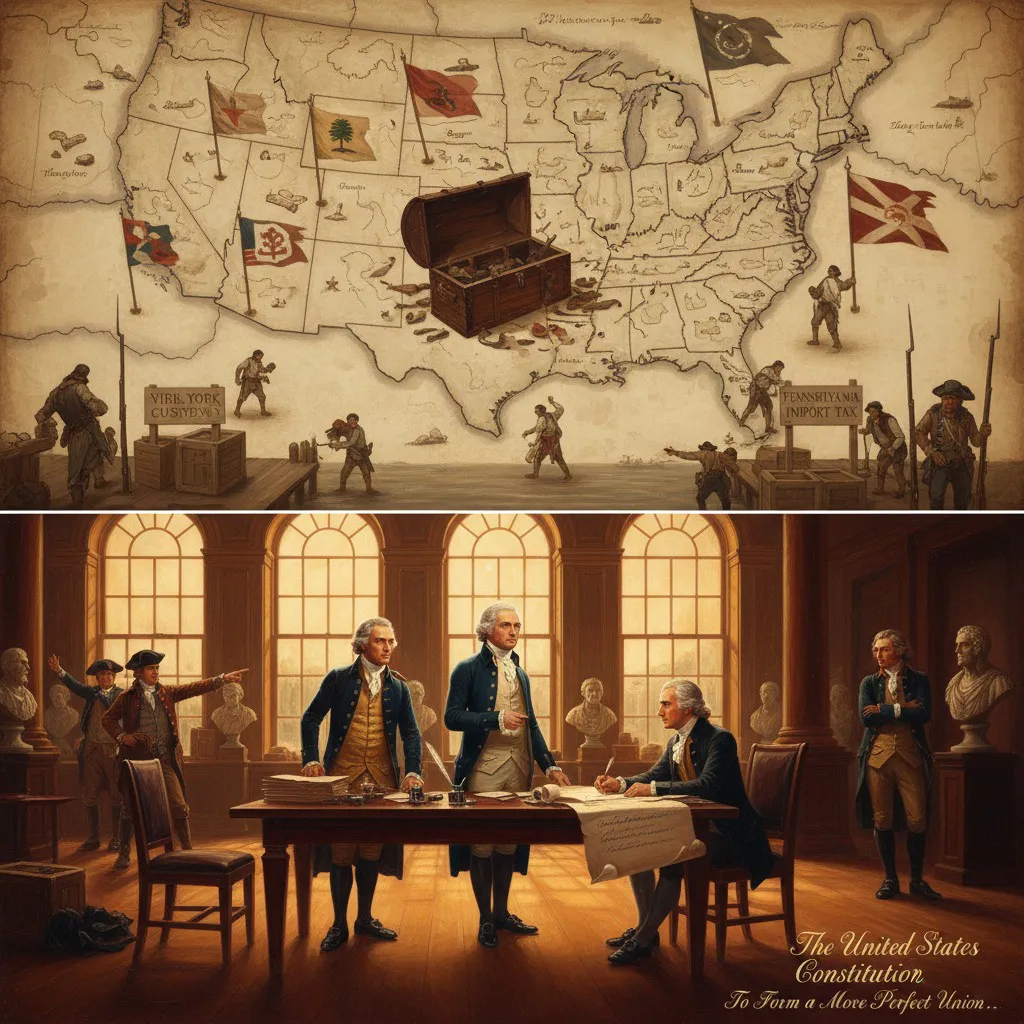
After the American Revolutionary War, the young United States faced severe challenges:
Farmers burdened by heavy local taxes
Merchants trapped in conflicting interstate trade rules
Revolutionary War soldiers still unpaid
This unrest exposed the weaknesses of the Articles of Confederation and sparked demands for a stronger federal government. The crisis led to the Constitutional Convention of 1787, where the U.S. Constitution was drafted — creating a unified framework to stabilize the nation and protect its future.
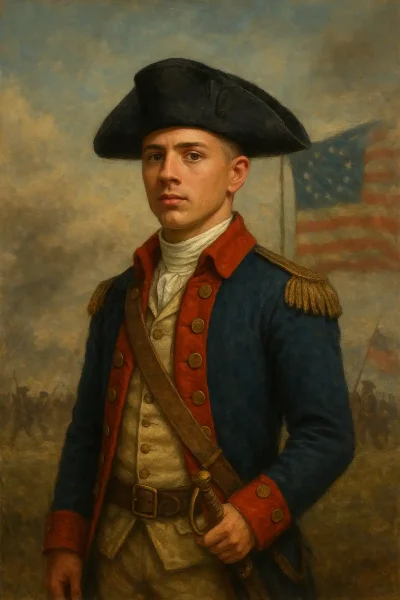
If Gen Z had been around during the Constitutional Convention of 1787, history might have looked a lot more like today’s social media feed. Instead of quill pens and parchment, they’d be creating viral memes and short videos with captions like:
“When you win your freedom but the system’s still in beta”
“Eight years of fighting and now the Constitution loading screen won’t end”
In 1787, leaders like George Washington, James Madison, and Alexander Hamilton convened the Constitutional Convention in Philadelphia’s Independence Hall to replace the weak Articles of Confederation with a stronger national framework.
After months of debate and compromise, September 17, 1787 marked the signing of the U.S. Constitution, transforming America from a fragile alliance into a unified nation with federal government, checks and balances, and representative democracy
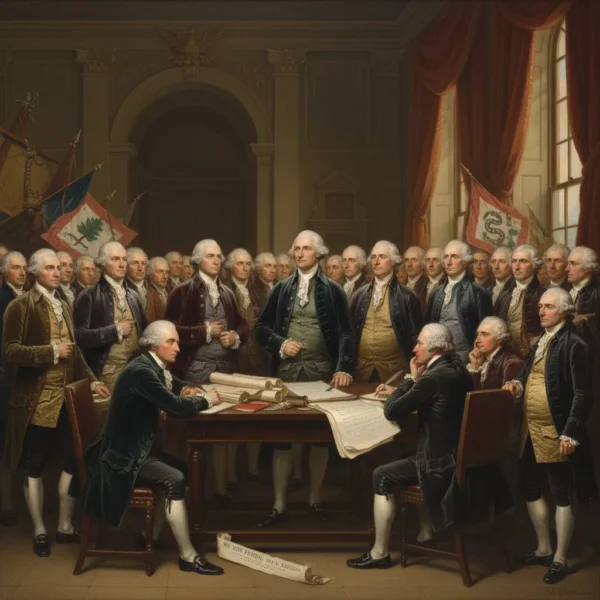
The Road to “We the People” – Philadelphia’s Constitutional Journey
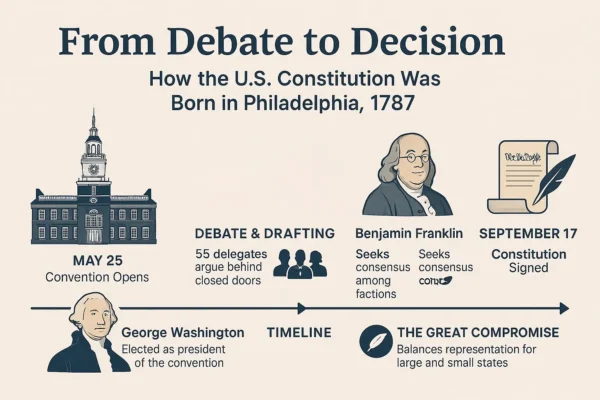
At the Constitutional Convention 1787, James Madison’s Virginia Plan pushed for representation based on population, favoring large states. William Paterson’s New Jersey Plan demanded equal representation to protect small states.
Debates over executive power and counting enslaved people led to the Three‑Fifths Compromise and a bicameral legislature:
House of Representatives – seats by population
Senate – two per state
The Great Compromise established three co‑equal branches — legislative, executive, judicial — with checks and balances
At the Constitutional Convention of 1787, two rival visions for America’s future clashed:
The Virginia Plan – proposed by James Madison, favored a strong federal government with representation based on population, benefiting larger states.
The New Jersey Plan – led by William Paterson, aimed to preserve state sovereignty with equal representation for all states.
Fierce debates over executive power and the counting of enslaved people led to the Three‑Fifths Compromise and the creation of a bicameral legislature:
House of Representatives – seats based on population
Senate – two seats per state
The resulting Great Compromise balanced the interests of large and small states, forming the U.S. Constitution’s enduring framework: three co‑equal branches of government — legislative, executive, and judicial — with a checks and balances system
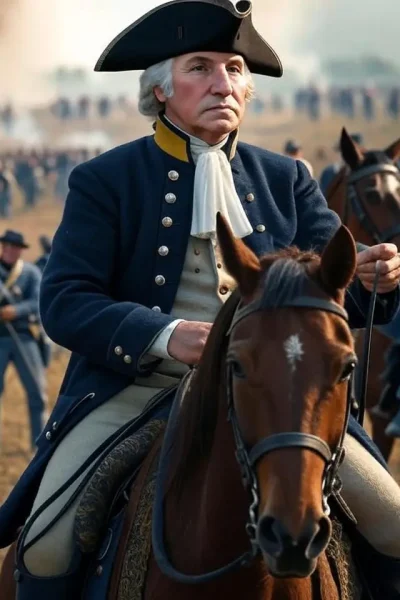
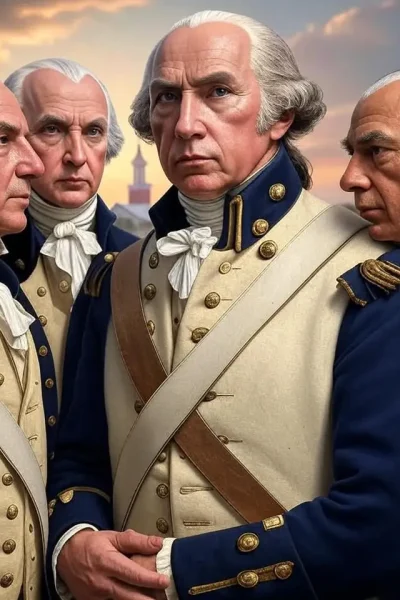
Freedom — A Brighter Tomorrow for Everyone
On September 17, 1787, inside Independence Hall, Philadelphia, thirty‑nine delegates signed the United States Constitution — knowing it wasn’t perfect, but believing it was the nation’s best hope for unity, stability, and survival. This pivotal moment transformed America from a fragile alliance of states into a unified nation with a lasting constitutional framework.
Thanks to its adaptable structure and the ability to evolve through constitutional amendments, the U.S. Constitution has guided American democracy, federal governance, and individual rights for over two centuries
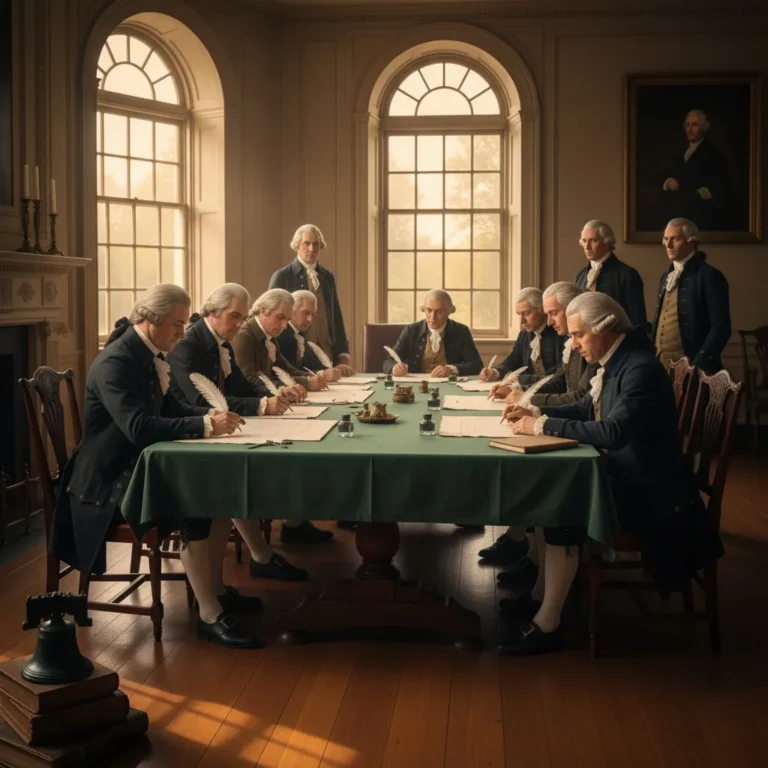
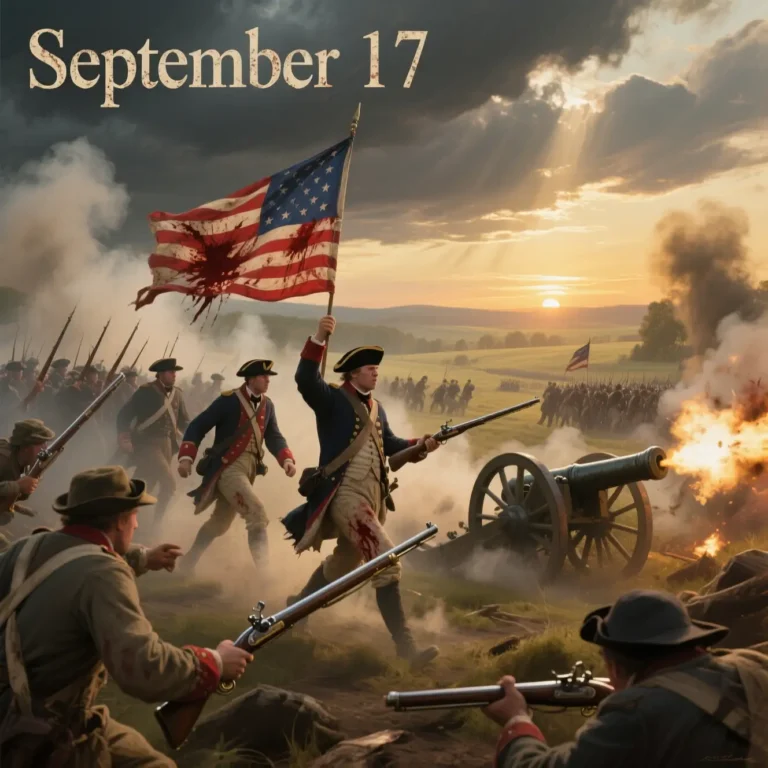
In 1787, during the Constitutional Convention at Independence Hall, James Madison surprised viewers on Instagram Live by showcasing a Waterproof & Sweat‑Proof BB Cream — a long‑lasting, full‑coverage face cream for any climate, any event, any lifestyle.
Its lightweight formula blurred imperfections, evened skin tone, and gave a natural glow without feeling heavy. Shade 02 matched his brown coat perfectly, and Madison declared it worked for all skin types, from summer heat to rainy days, festivals, sports events, and long workdays.
Viewers flooded the chat with #FoundingGlow and requests for the purchase link, making it clear this was the best BB cream for all‑day wear.
Want flawless, camera‑ready skin at weddings, sports events, outdoor festivals, or even during a busy workday?
now and look your best in every moment.
During a chaotic Discord debate over state representation in the Great Compromise, Benjamin Franklin surprised everyone — not with a speech, but by calmly grooming his cat on webcam using a Blue Pink Pet Comb Brush.
The cat purred in bliss as the anti‑tangle bristles smoothed its fur to a glossy shine. Franklin quipped: “To make the Great Compromise work, we must first untangle the knots… in politics, and in fur.”
The chat exploded with questions about the brush, available in Blue Pink and Smoke Grey, and praised its 18×9.5 cm compact size and fur‑smoothing design. Even Washington, acting as server admin, enabled Slow Mode so everyone could grab the purchase link.
In the end, the Great Compromise passed via emoji vote 🎉🐱 — but the real star was the Pet Comb Brush, now a must‑have for cat grooming and a symbol of keeping debates smooth.
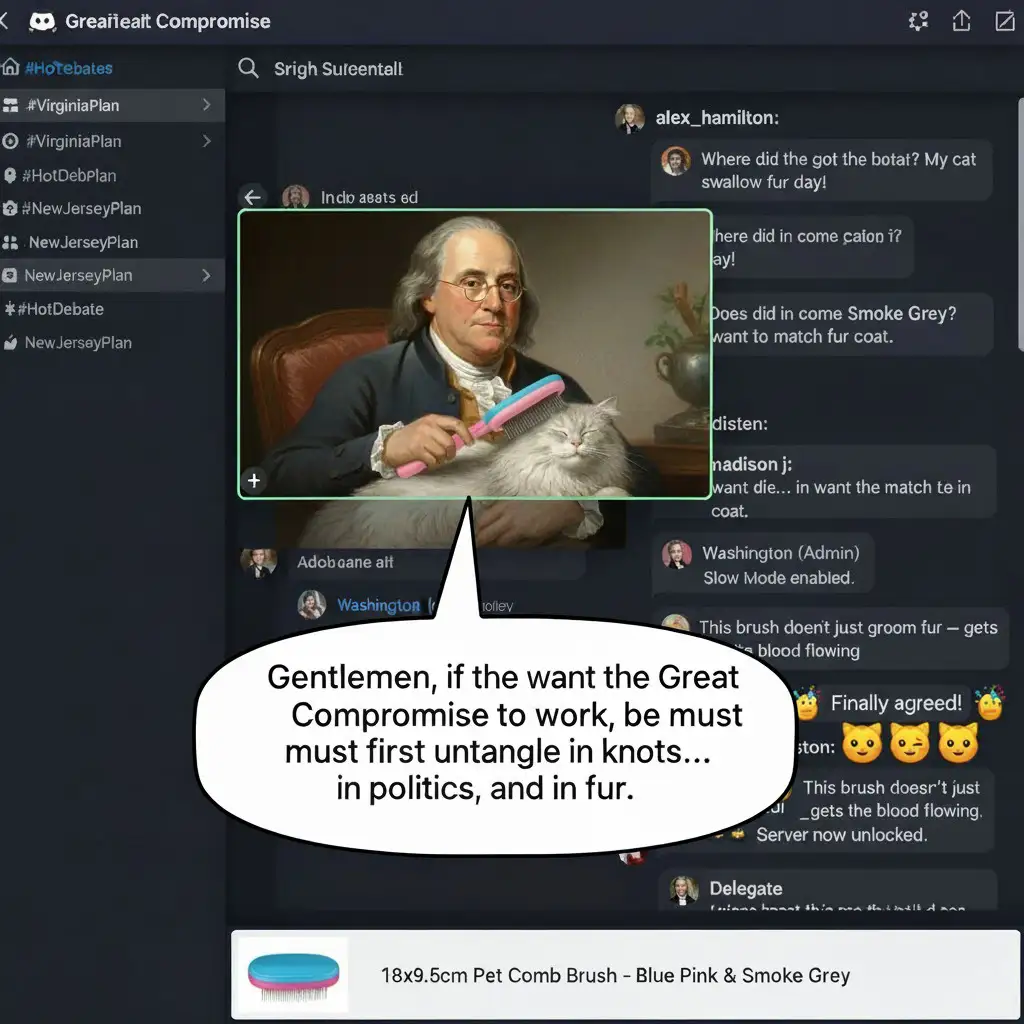


During the heated debates of Summer 1787 at Independence Hall, tensions over how enslaved people should be counted reached a boiling point. As northern and southern delegates clashed, Gen Z activists entered the scene — armed with hashtags, placards, and the unexpected hero: a Portable Perfume Box Fan.
With its 7 blades, 1200mAh battery, and compact design (158×78×29 mm), the fan delivered a refreshing breeze and subtle fragrance that calmed the room. Even delegates began breathing easier, joking that equal rights might be easier to discuss with cooler air.
Social media buzzed with comments like:
“Where’d you get that scented fan?”
“#FreshDebates — drop the purchase link!”
Made with a sleek ABS body and portable fragrance tech, the fan became a symbol of cooling down political heat — and refreshing the conversation around representation.
